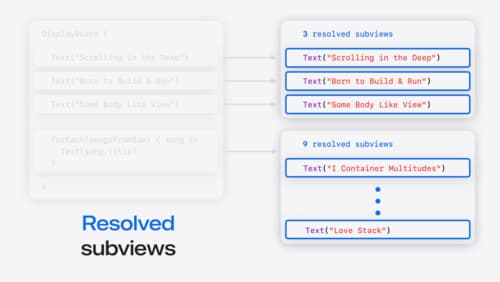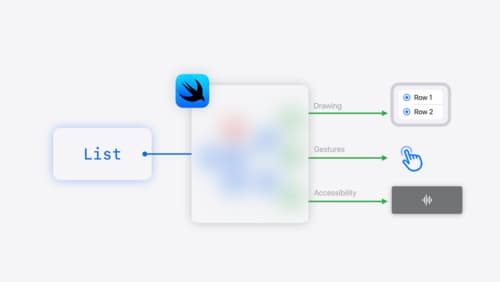How do I built a custom container view with SwiftUI
Asked on 2024-07-30
1 search
To build a custom container view with SwiftUI, you can follow the guidance provided in the session "Demystify SwiftUI containers" from WWDC 2024. Here are the key steps and concepts:
-
Understanding Composition:
- SwiftUI containers use a trailing
ViewBuilderclosure to wrap their content. This allows you to define content either statically or dynamically. - You can use containers like
ListandForEachto compose different kinds of content together. - Example: A
Listcan be initialized with a collection of data or by manually writing out a set of views.
- SwiftUI containers use a trailing
-
Creating Custom Containers:
- Start by making your custom container support any composition of content to maximize flexibility.
- Example: You can create a custom card view and make your container more flexible by adding support for more kinds of composition in its content.
-
Adding Support for Sections:
- Custom containers can be enhanced to support sections, similar to how
Listsupports sections using SwiftUI'sSectionview. - Example: You can create separate sections for different categories within your custom container.
- Custom containers can be enhanced to support sections, similar to how
-
Custom Modifiers:
- Use container-specific modifiers to customize content within your container.
- Example: You can define custom view modifiers using the new
container valuesAPI to add specific behaviors or styles to the content within your container.
-
Implementing Custom Modifiers:
- Define a new kind of container value using an extension on the
ContainerValuestype. - Use the new
entrymacro to add new values to SwiftUI's keyed storage types. - Create a custom view modifier to set your property and apply it within your container.
- Define a new kind of container value using an extension on the
For a detailed walkthrough, you can refer to the session "Demystify SwiftUI containers" at the following timestamps:
These chapters will provide you with a comprehensive understanding and practical examples of building custom container views in SwiftUI.

Demystify SwiftUI containers
Learn about the capabilities of SwiftUI container views and build a mental model for how subviews are managed by their containers. Leverage new APIs to build your own custom containers, create modifiers to customize container content, and give your containers that extra polish that helps your apps stand out.

SwiftUI essentials
Join us on a tour of SwiftUI, Apple’s declarative user interface framework. Learn essential concepts for building apps in SwiftUI, like views, state variables, and layout. Discover the breadth of APIs for building fully featured experiences and crafting unique custom components. Whether you’re brand new to SwiftUI or an experienced developer, you’ll learn how to take advantage of what SwiftUI has to offer when building great apps.
